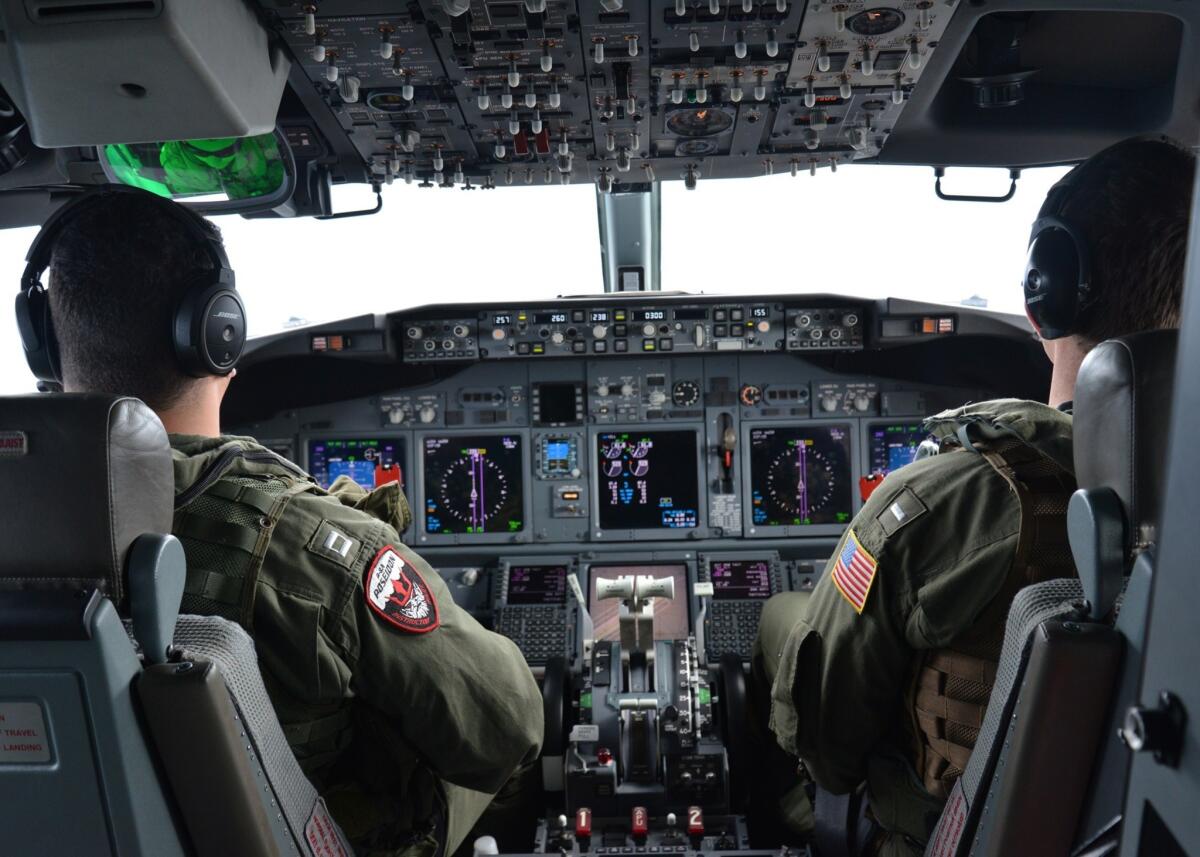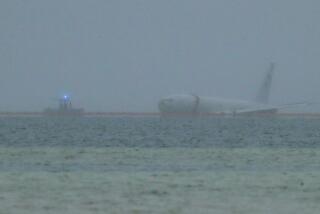U.S. Navy adds 2nd sub-hunting plane to search for Malaysian jetliner

The Navy is adding another advanced submarine-hunting aircraft to its effort to find debris from missing Malaysia Airlines Flight 370.
A second P-8 Poseidon will replace an older P-3 Orion in the 30,000-square-mile search area in the rough waters of the Indian Ocean southwest of Perth, the Navy said.
Planes searching for signs of the missing Boeing 777 were grounded Thursday because of stormy conditions.
The delay frustrated search teams because satellite photos were released Wednesday showing 122 objects in the ocean that could be wreckage. Officials said Thursday that a Thai satellite had detected about 300 suspicious objects.
The waters of the southern Indian Ocean are among the most treacherous in the world, beset by strong westerly winds between the latitudes of 40 and 50 degrees south, earning it the nickname âroaring 40s.â
Harsh weather conditions and potential icing âmake the addition of the all-weather P-8 extremely valuable,â the Navy said.
The P-8 will fly Friday from Okinawa, Japan, to Perth, joining an Australian-directed international armada.
The Navy calls the P-8 âthe most advanced long-range anti-submarine and anti-surface warfare aircraft in the world.â Officials say the P-8 Poseidon can cover as much as 15,000 square miles in one nine-hour mission, using advanced surface radars and sensors.
The aircraft is based on a heavily modified Boeing 737 and typically flies at elevations of 5,000 to 10,000 feet. In addition to its surface-scanning abilities, the plane can drop sonar systems into the water that send back signals indicating what is below the surface.
The Navy said the P-8 costs $42,740 each day itâs used. The P-3 costs $76,840 a day.
A four-engine turboprop patrol aircraft made by Lockheed Martin Corp., the P-3 has been searching for wreckage since the jetliner, carrying 239 passengers and crew members, disappeared March 8 while en route from Kuala Lumpur, Malaysia, to Beijing. It will return to Okinawa, the Navy said.
U.S. Navy aircraft have flown 16 missions of more than 150 flight hours in the search effort, covering more than 250,000 square miles.
More to Read
Sign up for Essential California
The most important California stories and recommendations in your inbox every morning.
You may occasionally receive promotional content from the Los Angeles Times.









